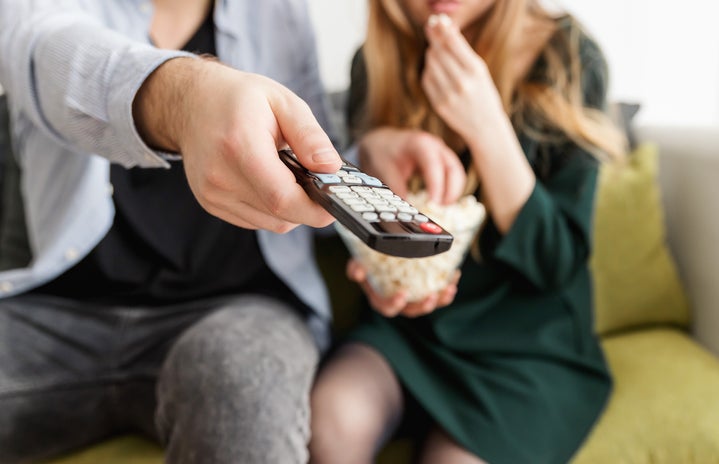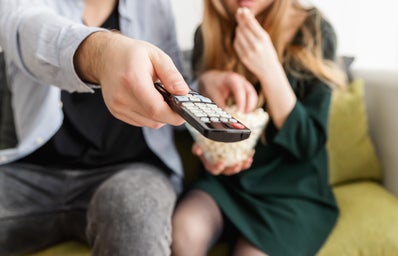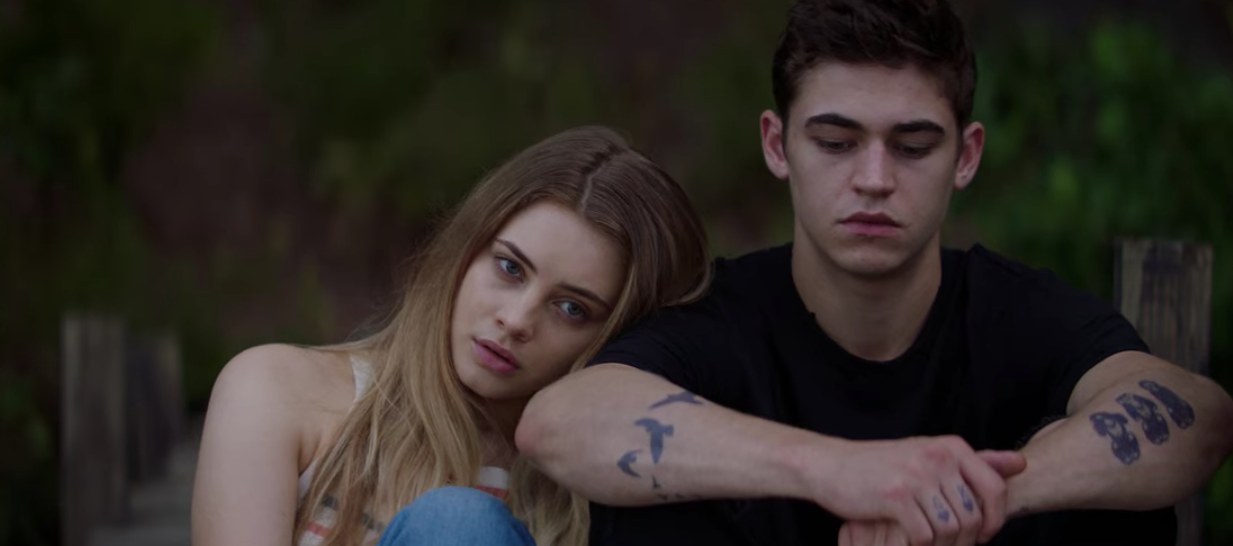Movies and TV shows portray some of the most iconic love stories of all time. Whether it’s based on a true story or pure fiction, the screen brings happy endings and tragedies to life. While it’s easy to get drawn into romance, in my opinion, there are several Hollywood films and TV shows that mask and romanticize the toxic behaviour of male love interests.
I was scrolling through YouTube when I came across the trailer for the third film in the After franchise. Several of the commenters stated they wanted a relationship like Hardin and Tessa, the main characters. Going off the first two films, nobody in real life should want a relationship like Hardin and Tessa’s. Apart from the notoriously overdone plot involving playboy Hardin being dared to manipulate shy Tessa into falling in love with him (red flags all around), their meet-cute in the first film is questionable. Tessa comes out of the bathroom after showering and finds Hardin in her dorm. When she asks him to leave, he decides it’s his right to sit there. Already off to a bad start, Hardin has a short temper and often takes it out on Tessa by yelling at her or throwing objects and breaking them. This is not normal, and the film rarely addresses it.
Going back to the mid-2000s, we have to talk about Pretty Little Liars — more specifically, about the relationship between Aria and Ezra. It begins in disaster when 22-year-old Ezra is unaware that 15-year-old Aria is underage when the two hook up in a bar the day before school starts. When Ezra realizes the girl he was with last night is one of his students, he continues to pursue her and the two start a relationship. Later, it turns out that Ezra knew how old Aria was when they first met, and this didn’t seem to bother him. Even with Ezra’s pedophilic behaviour, the show gives the two characters a happy ending, wrapping up with their marriage. More importantly, the Ezra and Aria (#Ezria) relationship had Pretty Little Liars fans invested when the show was airing, with the majority of them being pre-teens and teenagers. In 2017, The Huffington Post wrote about the statutory rape problems in Aria and Ezra’s relationship. The article mentions how the seventh season of the show briefly discusses this illegal relationship, before quickly brushing it under the rug. It also notes that Marlene King, the creator of the show, told The Hollywood Reporter in 2014 that she believed Aria and Ezra would be soulmates. Actress Lucy Hale, who plays Aria, said in an interview with Cosmopolitan that Aria and Ezra’s relationship is “super sexy” because of its forbidden romance-like qualities. Why was the show so set on idolizing this essentially illegal relationship to impressionable teens?
The last example takes us to Forks, Washington with the film series that was a cultural reset for teenagers in 2008, Twilight. While I love Twilight for its nostalgia and fall aesthetics, the relationship between Bella and Edward has its flaws. From the beginning of the film, Edward starts stalking Bella because of his infatuation with her. He watches her sleep and is conveniently wherever Bella is. In the second film, Edward breaks up with Bella by gaslighting her into believing that she isn’t good enough for him, exploiting her insecurities about their relationship. He then leaves her alone in the middle of the forest. His toxic, creepy and emotionally abusive behaviour is blamed on the fact that he is a vampire. The films don’t really address the fact that what Edward is doing is wrong. In the third film, he exhibits extremely possessive behaviour fuelled by his jealousy over her friendship with Jacob. Edward doesn’t respect Bella’s ability to make her own decisions and believes he knows what’s best for her. None of this is healthy and nobody calls out Edward for the way he treats Bella. Again, they get a happy ending.
Unfortunately, the list goes on: Gossip Girl’s Chuck and Blair, Fifty Shades Of Grey’s Christian and Ana, Once Upon A Time’s Rumpelstiltskin and Belle, and Grease’s Danny and Sandy.
Yes, this is all fiction, but the media has an impact on its viewers. All three examples are made for impressionable young people. Teenagers who watch these movies and TV shows may walk away thinking that love looks like this. It’s worrisome to think about the girls in the comments of the After trailer who want a relationship like Hardin and Tessa’s. What happens when they begin to establish their romantic relationships and their significant others begin acting like Edward or Hardin?
Portraying toxic relationships when the toxicity is intentional is not the problem; the problem arises when the media fails to recognize the effect romanticizing toxicity has on audiences. Hollywood can and should do better.





